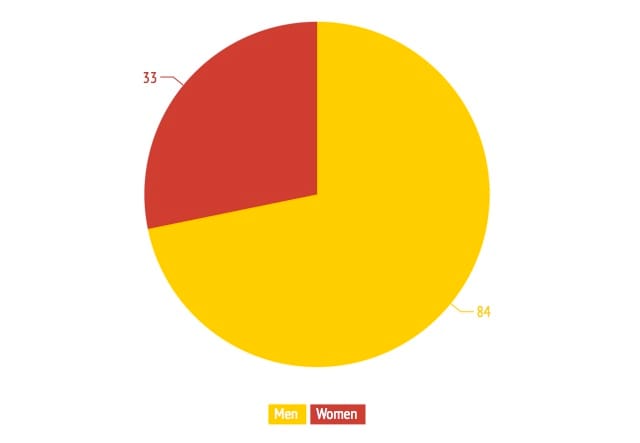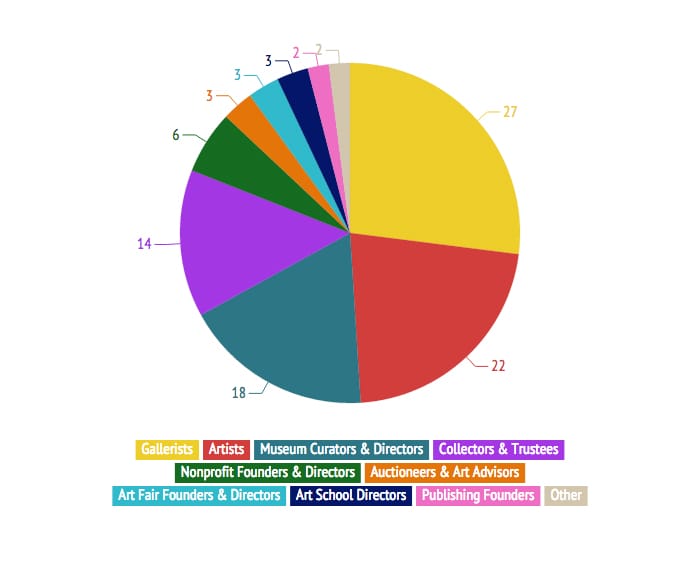Breaking Down ArtReview's 2014 Power 100 List
ArtReview has released its annual list of the 100 most powerful people in the contemporary art world and, once again, the only surprising thing about the list is how utterly unsurprising it is.

ArtReview has released its annual list of the 100 most powerful people in the contemporary art world and, once again, the only surprising thing about the list is how utterly unsurprising it is.
Tate’s director Nicholas Serrota takes top honors this year (up from number 6 in 2013), while last year’s top power broker, Sheikha Al-Mayassa bint Hamad bin Khalifa Al-Thani of the Qatar Museums Authority, has tumbled to 13th. Staying steady in the 2nd and 3rd slots, respectively, are global megadealers David Zwirner and Iwan Wirth. The highest ranking artist or woman on the list, Marina Abramović, is up to number 5 from 11 last year. Larry Gagosian and MoMA director Glenn Lowry traded places, landing at number 8 and 4, respectively. There are a dozen first-timers on this year’s list — the highest-ranking is the duo of Centre Pompidou president and director Alain Seban and Bernard Blistène, four people neither gained nor lost power, and seven people who didn’t appear on 2013’s list reentered the rankings.

The biggest mover this year, Jeff Koons, jumped up 49 spots to number 7 on the strength of his Whitney Museum retrospective. Ukrainian steel magnate and collector Victor Pinchuk took the biggest tumble in this year’s rankings, falling 47 slots to number 85.

As in years past, individuals and groups based in Europe and North America are wielding the most power in 2014, and men continue to hold the positions deemed most powerful by ArtReview. Of all the people featured on the list (117 when you break down all the duos, trios, and quartets), 72% are men.

Taken together, Europe and North America account for 70 entries, with the rest of the world (where some 5.85 billion people reside) logging just 30 power players. Africa’s lone representative, Senegalese curator Koyo Kouoh, appears at number 96. Notably absent, geographically, are Canada, Australia, and Iceland — apparently a slew of solo shows for Ragnar Kjartansson and an upcoming MoMA retrospective for Björk weren’t enough to get ArtReview‘s editors to Reykjavik. (For the purpose of our analysis, people based in the United Arab Emirates, Lebanon, and Turkey are counted as being based in Asia.)

For some semblance of diversity, let’s look at the occupational breakdown, where, despite the absence of a single art critic (no more love for The Smiths?), things do get a little more interesting. A healthy number of artists appear in the rankings (22 in all), with three cracking the top 10 (Cindy Sherman lands at number 10).

Just over a quarter of this year’s power players are dealers (27 total), though for such a market-driven feature the tiny number of auctioneers and art advisers (3) is surprising. After dealers and artists, curators and directors of museums (18) and collectors and trustees (14) are the most heavily represented on the 2014 Power 100.
The list’s most empowering feature, however, is one of its omissions: Damien Hirst is absent from the list he topped twice (in 2005 and 2008) for the second year in a row.
Stay tuned for Hyperallergic’s annual Powerless 20.
With additional number crunching by Jillian Steinhauer




